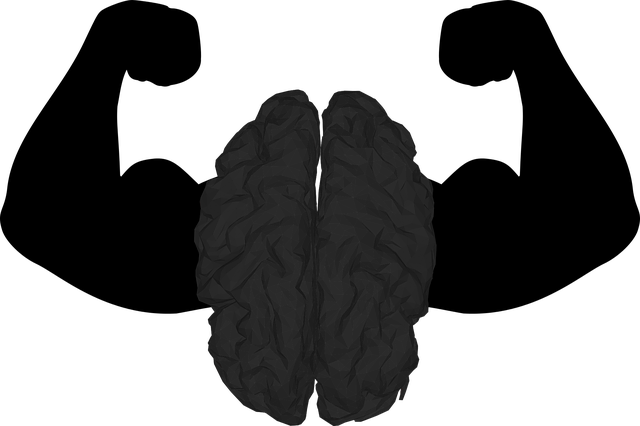Marketing Greenwood Village Biofeedback Therapy: Targeted Strategy for Mental Wellness
Greenwood Village Biofeedback Therapy offers a unique, data-driven approach to mental wellness, comb…….
Welcome to an in-depth exploration of Greenwood Village Biofeedback Therapy, a pioneering approach within the healthcare industry that leverages advanced technology to promote healing and wellness. This article aims to guide readers through the intricate world of biofeedback therapy, its global impact, economic implications, technological innovations, regulatory landscape, and future prospects. By delving into these aspects, we will uncover the significance of Greenwood Village Biofeedback Therapy and its potential to revolutionize healthcare practices worldwide.
Definition: Greenwood Village Biofeedback Therapy is a non-invasive therapeutic technique that facilitates the healing process by providing real-time feedback to individuals about their physiological responses. This therapy empowers patients to gain control over specific bodily functions, enabling them to manage chronic conditions and enhance overall well-being.
Core Components:
Historical Context: The roots of biofeedback therapy can be traced back to the mid-20th century when researchers and scientists began exploring the relationship between mental processes and physical responses. Early experiments in the 1960s laid the foundation for modern biofeedback techniques, and over the years, technological advancements have significantly enhanced its effectiveness. The term “Greenwood Village” is often associated with this therapy due to the pioneering work done at the Greenwood Village Institute, a research center dedicated to advancing biofeedback technology.
Significance: Greenwood Village Biofeedback Therapy offers a holistic approach to healthcare by addressing both physical and mental aspects of well-being. By teaching individuals to regulate their physiological responses, it empowers them to take an active role in managing their health, which is particularly valuable for chronic conditions that require long-term management. This therapy has found applications in various fields, including medicine, psychology, sports performance, and pain management.
Greenwood Village Biofeedback Therapy has transcended geographical boundaries, gaining recognition and adoption worldwide. Its global impact is evident across different regions, each contributing to its evolution and tailoring it to local healthcare needs.
International Influence:
Key Trends Shaping its Trajectory:
The economic landscape of Greenwood Village Biofeedback Therapy is dynamic and multifaceted, reflecting its increasing importance in healthcare systems worldwide.
Market Dynamics:
Investment Patterns:
Role in Economic Systems: Greenwood Village Biofeedback Therapy contributes to economic systems by:
Technological innovations have been pivotal in the evolution of Greenwood Village Biofeedback Therapy, enhancing its capabilities and expanding its reach.
Significant Advancements:
Impact on Therapy:
Future Potential:
The regulatory environment surrounding Greenwood Village Biofeedback Therapy is complex, varying across jurisdictions while striving to ensure patient safety and ethical practices.
Key Policies and Regulations:
Influence on Development:
Despite its numerous benefits, Greenwood Village Biofeedback Therapy faces several challenges and criticisms that require careful consideration and strategic solutions.
Main Challenges:
Criticisms and Proposed Solutions:
The following case studies illustrate the practical applications of Greenwood Village Biofeedback Therapy and its impact on various individuals’ lives.
Case Study 1: Chronic Pain Management
A 42-year-old patient, Sarah, suffered from chronic lower back pain that significantly impacted her daily activities. She underwent a 12-week biofeedback therapy program, learning to control muscle tension and relaxation responses. After the treatment, Sarah reported a 70% reduction in pain intensity and improved flexibility, enabling her to resume regular physical activities without discomfort.
Key Takeaways:
Case Study 2: Anxiety and Stress Reduction
John, a 35-year-old working professional, sought help for severe anxiety and stress-related issues. Through biofeedback therapy, he learned to regulate his heart rate and brain waves, achieving relaxation responses during stressful situations. After several sessions, John reported improved sleep quality, reduced irritability, and better overall emotional control.
Lessons Learned:
Case Study 3: Sports Performance Enhancement
A professional athlete, Lisa, aimed to improve her performance in long-distance running. She incorporated biofeedback therapy into her training regimen, focusing on muscle activation and oxygen utilization. The feedback sessions helped Lisa optimize her breathing patterns and enhance muscular efficiency, resulting in improved race times and reduced fatigue.
Insights:
The future of Greenwood Village Biofeedback Therapy is promising, with emerging trends and strategic considerations shaping its direction.
Potential Growth Areas:
Strategic Considerations:
Greenwood Village Biofeedback Therapy has emerged as a powerful tool in modern healthcare, offering individuals greater control over their physical and mental well-being. Through technological advancements, expanding accessibility, and evidence-based practices, biofeedback continues to evolve, addressing diverse health challenges. Overcoming challenges and criticisms through strategic solutions and international collaboration will ensure its continued growth and positive impact on global health.
As the field advances, the potential for biofeedback therapy to complement traditional healthcare approaches while enhancing patient outcomes remains immense. With ongoing research, innovation, and dedicated professionals, Greenwood Village Biofeedback Therapy is poised to shape the future of personalized healthcare.

Greenwood Village Biofeedback Therapy offers a unique, data-driven approach to mental wellness, comb…….